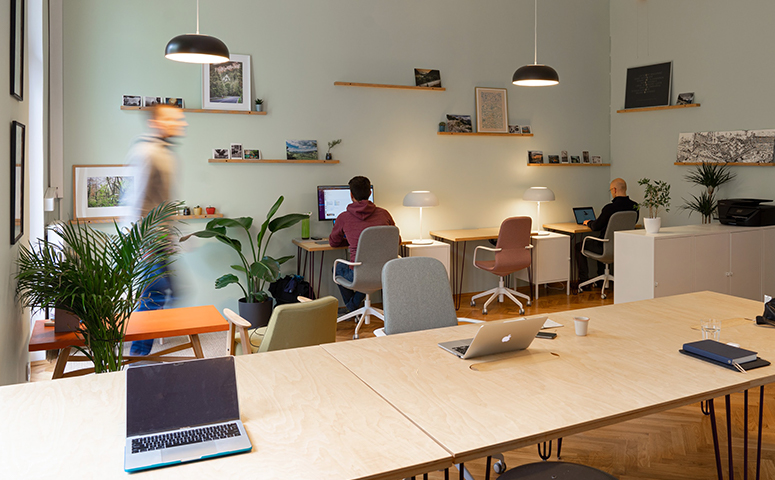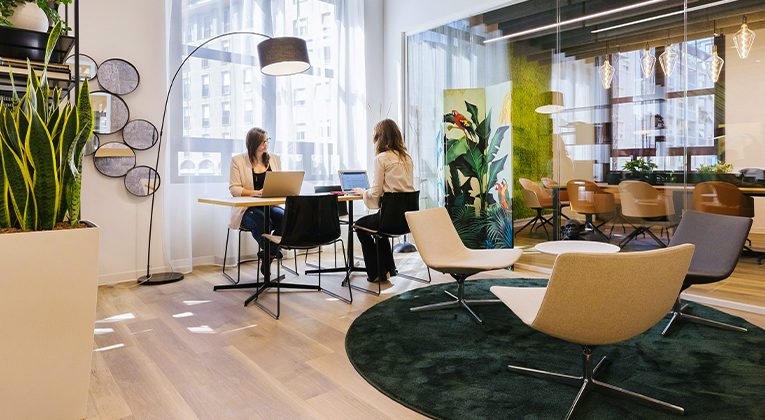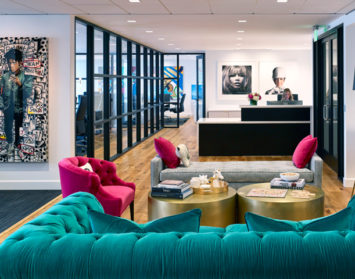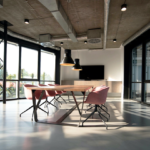By Nicholas Willis
If you build it, they will come…it may seem like a cliché, but as we have seen over the last several months, companies are developing return to work office spaces to meet the demands of a hybrid work environment. Whether you are in a position to make large changes, or just small tweaks to your office space and operations, they can all have a meaningful impact for your company and your team. Here are a few concepts we encourage businesses to reflect on when considering the use of their space to support a hybrid work environment.
The Right-Size Space
We need to think about space differently. The ways we determined how much space a company needs have evolved to layer in new flexible work schedules. It may not mean significantly less space, but rather different types of space that meet the new operational goals and culture of the company.
Offices of today that have a substantial hybrid workforce will no longer be able to rely on individual space needs as a marker of measurement, for overall space, and it will be paramount that a real estate team understands an organization’s workflow, as well as functional, support and amenity requirements to properly assess space size.
It may be that the average area-per-person metric we currently use does not change much despite less people coming to the office full-time. However, we must now address individual workspaces allocated, and not refer to a company’s total head count, while also considering any additional areas that may be required for updated amenities and collaboration.
What will change is how we effectively maximize common spaces for a team that will be more mobile, more remote, yet more virtually connected than ever before.
People First – Remote or Permanent
Hughes Marino, as well as a lot of our clients, have always approached office space with “people” as one of the top considerations. Your team members are the most important assets of your company. With this at the forefront, you want your team to enjoy their workspace and office environment while focusing on their emotional and physical well-being, and adapting to optimize their workflow and productivity, whether they are remote or in the office, lab or warehouse.
Some team members will be more comfortable getting back to a “new normal” quicker than others, and some will have a stigma of physical distancing that lingers long after the pandemic. A best practice we highly encourage is to survey your team on their thoughts and comfort level in the office to determine where policies should be reinforced, but also where they can be relaxed. Giving a voice to your team will help to better align the communication and connectivity a company must maintain to retain the teams and culture that they have. If you need any ideas on how to craft an employee survey, our team has developed an example that we are happy to share!
Once you understand your team’s level of comfort and preferred work environment, here are several things we recommend to consider incorporating to make sure your space fits their needs.
Offer Amenities You Can’t Get at Home
The hybrid office will be more of an event and brainstorming space, a comfortable and hospitable workspace with high-quality coffee, and an escape from the everyday home office and its limitations. The office will need to be a place that offers functional space that far exceeds people’s homes and continues to be a place where a company’s mission, culture and collaborative force can instill a sense of teamwork and promote innovation.
Physical distancing and cleanliness will still be priorities. In a sense, the office could become the refined, comfortable gathering place it perhaps has always strived for.

Cultivate A Place to Connect
If teammates find their focus time is best served from their work-from-home space, the evolution from individual desks to collaborative groupings (such as “agile workspaces,” “dynamic environments” or “innovation zones”) will accelerate, and utilization will center on these environments. The number of dedicated video conferencing rooms could increase, as will team rooms for temporary heads down work as a group.
These collaborative spaces need to accommodate the team members who are required to be in every day and also accommodate those who come in less frequently.
Technological Mobility
Technology should be leveraged to further enhance the hybrid workplace utilization. There are a number of strategies that can be deployed to optimize usage of spaces from “hoteling” software, dedicated videoconferencing rooms, movement and density scanning to understand space utilization, and enhanced WiFi connectivity. Companies should also take into consideration where videoconferencing will occur and how often, and designate rooms specifically for that purpose.
The Next Level of Office Space
How will the next generation of the office fulfill all these requirements? As with all organizations, there is no one size fits all approach, and workflow, your team and usage will largely determine a company’s needs. Real estate and design professionals who thoroughly understand their business will be best suited to advise on the path forward.
For companies that have found their teams can be successful with a work-from-home model, a space that provides functional needs while reinforcing their collaborative mission could be the unifying piece to a successful company strategy!
Nicholas Willis is interior planning director at Hughes Marino, a global corporate real estate advisory firm that exclusively represents tenants and buyers. Contact Nicholas at 1-844-662-6635 or nicholas.willis@hughesmarino.com to learn more.










